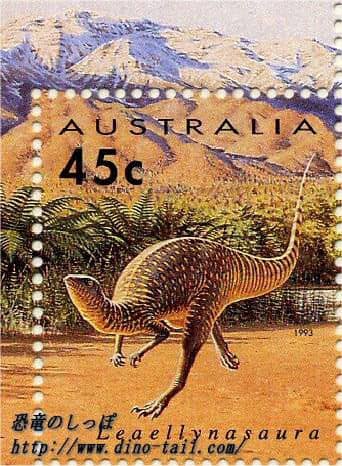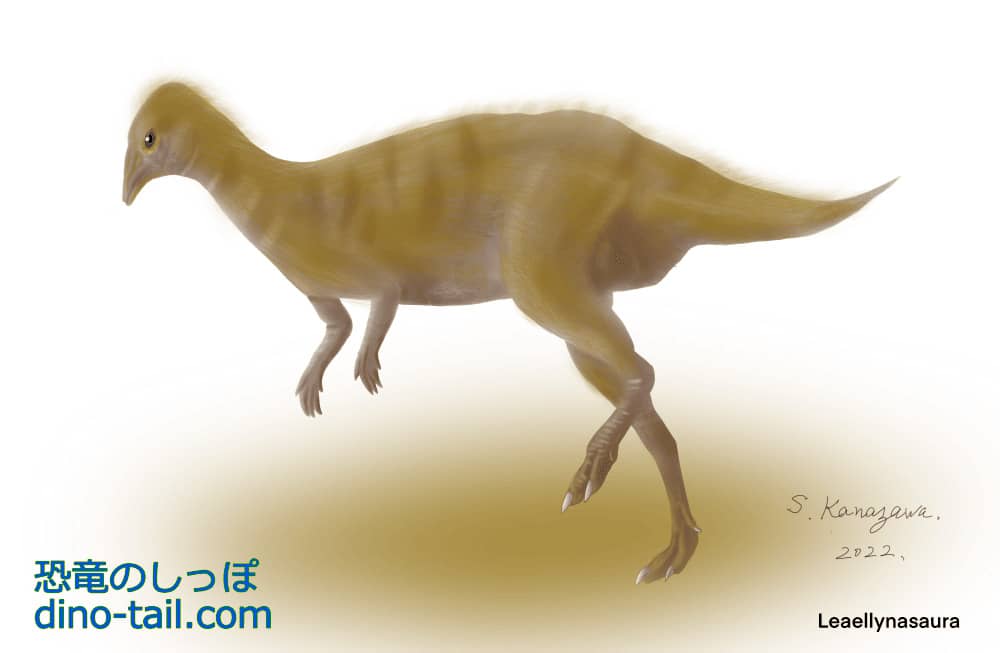About Leaellynasaura
| Scientific Name (Genus) | Leaellynasaura |
| Meaning of Name |
Leaellyn's lizard (named after the discoverer's daughter)
Leaellyn (personal name) - saura (lizard) [Greek] |
| Classification | Ornithischia, Ornithopoda (Basal Ornithopod) |
| Total Length | Approx. 1m |
| Diet | Herbivorous |
| Period | Early Cretaceous |
| Species |
Leaellynasaura amicagraphica
*The species name amicagraphica means 'friend-writing' and expresses gratitude to research supporters. |
| Year of Paper Publication | 1989 |
| Genus Name Publication |
Polar dinosaurs and biotas of the Early Cretaceous of southeastern Australia.
National Geographic Research, 5. by Rich, T. and Rich, P. 1989. |
Features

Leaellynasaura was a small dinosaur that lived in Australia.
During the Mesozoic Era, Australia was located within the Antarctic Circle, and there were seasons when the night lasted for weeks.
Leaellynasaura, which evolved in this environment, is characterized by large eyes and a large optic lobe (the part of the brain that controls vision). It has been suggested that it may have been a nocturnal dinosaur.
The Mystery of the Extra-Long Tail
Leaellynasaura is often reconstructed with a very long tail that makes up three-quarters of its body length, which has been considered its most prominent feature. This image is based on a fossil of an astonishingly long tail vertebra.
However, recent research has cast doubt on whether this long tail fossil truly belongs to Leaellynasaura. The type specimen for the genus Leaellynasaura is a skull fossil with large eye sockets, but this skull and the long tail were not found as part of the same individual.
Therefore, it has been suggested that this long tail may have actually belonged to another type of small ornithopod. The true appearance of Leaellynasaura, especially the length of its tail, remains one of the mysteries awaiting further discoveries.
Was It a Warm-Blooded Dinosaur?
During the Early Cretaceous, Australia was located within the Antarctic Circle, and for several months during the winter, the sun would not rise, a period known as the 'polar night.' How Leaellynasaura survived in such a harsh environment is a major puzzle.
Initially, the absence of 'lines of arrested growth' (which indicate a temporary halt in growth) in the bones of some Leaellynasaura specimens led to the theory that they were warm-blooded animals that could remain active year-round without hibernating. It has also been suggested that they may have been covered in feathers to retain body heat.
However, subsequent research has found growth lines in other Leaellynasaura specimens. This has made it impossible to definitively conclude that they were warm-blooded, and various interpretations are now being debated, such as the possibility that their growth rates varied depending on their stage of development or the environment. While it is certain that they possessed a skillful ability to regulate their body temperature, the details are still under investigation.

